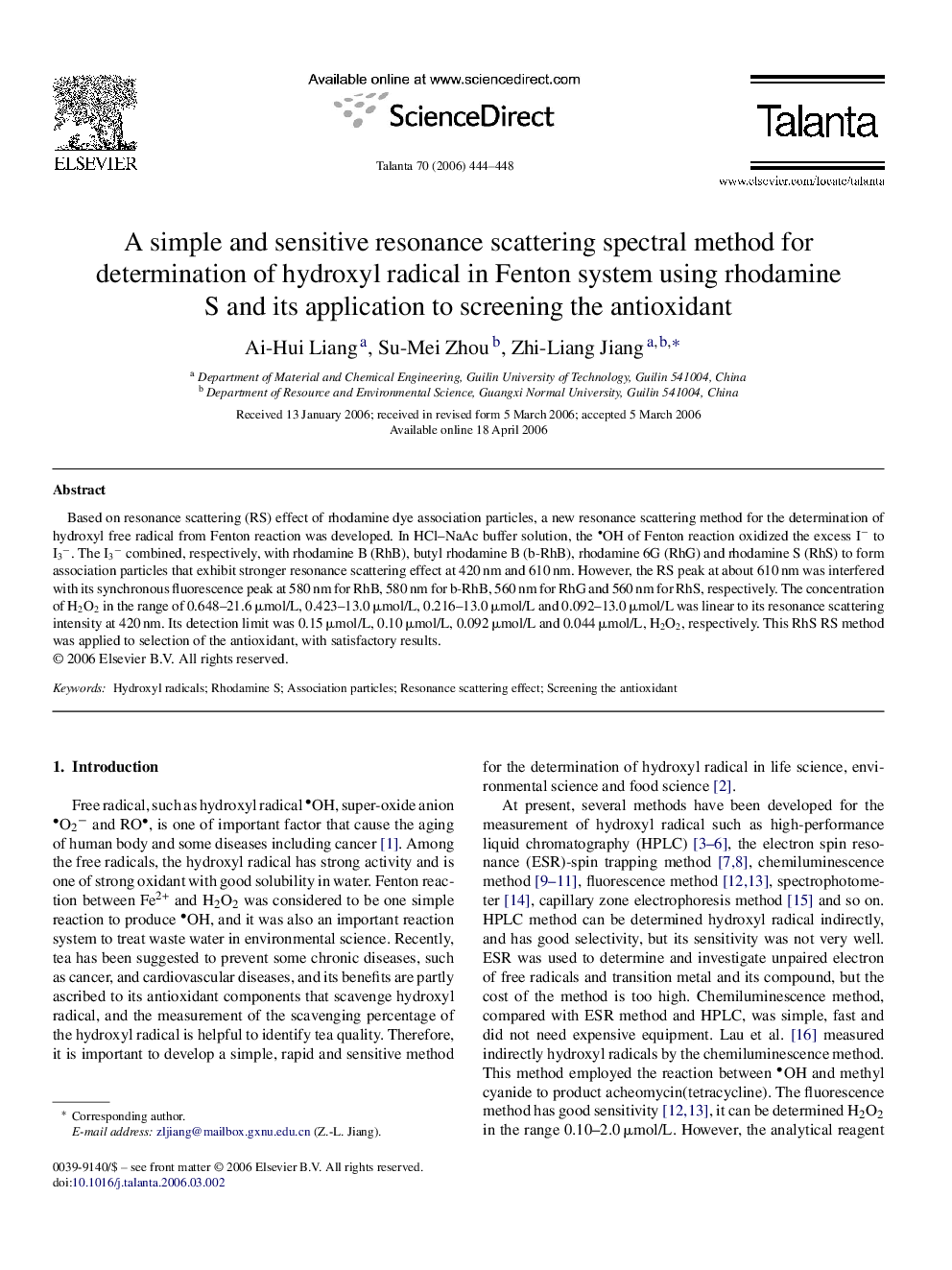| Article ID | Journal | Published Year | Pages | File Type |
|---|---|---|---|---|
| 1246478 | Talanta | 2006 | 5 Pages |
Based on resonance scattering (RS) effect of rhodamine dye association particles, a new resonance scattering method for the determination of hydroxyl free radical from Fenton reaction was developed. In HCl–NaAc buffer solution, the OH of Fenton reaction oxidized the excess I− to I3−. The I3− combined, respectively, with rhodamine B (RhB), butyl rhodamine B (b-RhB), rhodamine 6G (RhG) and rhodamine S (RhS) to form association particles that exhibit stronger resonance scattering effect at 420 nm and 610 nm. However, the RS peak at about 610 nm was interfered with its synchronous fluorescence peak at 580 nm for RhB, 580 nm for b-RhB, 560 nm for RhG and 560 nm for RhS, respectively. The concentration of H2O2 in the range of 0.648–21.6 μmol/L, 0.423–13.0 μmol/L, 0.216–13.0 μmol/L and 0.092–13.0 μmol/L was linear to its resonance scattering intensity at 420 nm. Its detection limit was 0.15 μmol/L, 0.10 μmol/L, 0.092 μmol/L and 0.044 μmol/L, H2O2, respectively. This RhS RS method was applied to selection of the antioxidant, with satisfactory results.
